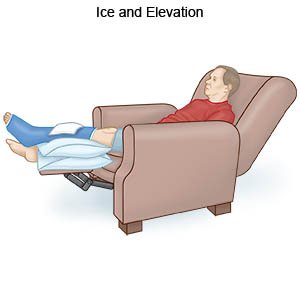Closed Reduction Internal Fixation of Leg Fracture in Adults
Medically reviewed by Drugs.com. Last updated on Aug 4, 2025.
You may have a splint or half cast placed during surgery to protect the area. The area will remain numb for up to 6 hours. It is normal to have pain. Take your pain medicines before the numbness wears off completely. You may also notice swelling and bruising.
DISCHARGE INSTRUCTIONS:
Call 911 for any of the following:
- You suddenly feel lightheaded, short of breath, or have chest pain.
- You cough up blood.
Seek care immediately if:
- Your leg feels warm, tender, and painful. It may look swollen and red.
- You have severe pain, even after you take medicine.
- Your cast or splint breaks.
- You cannot move your leg or toes.
- You have tingling or numbness in your leg or toes.
Contact your healthcare provider if:
- You have a fever or chills.
- Your cast or splint gets wet or begins to smell.
- Your bandage or cast feels too tight or too loose.
- You have a lot of itching under your cast or splint.
- You have questions or concerns about your condition or care.
Medicines:
- Prescription pain medicine may be given. Ask your how to take this medicine safely.
- Take your medicine as directed. Contact your healthcare provider if you think your medicine is not helping or if you have side effects. Tell your provider if you are allergic to any medicine. Keep a list of the medicines, vitamins, and herbs you take. Include the amounts, and when and why you take them. Bring the list or the pill bottles to follow-up visits. Carry your medicine list with you in case of an emergency.
Self-care after surgery:
- Apply ice to the area. Ice helps decrease swelling and pain. Ice may also help prevent tissue damage. Use an ice pack or put crushed ice in a plastic bag. Cover it with a towel and place it on your fractured area for 15 to 20 minutes every hour or as directed.

- Elevate your leg as directed. Raise your leg above the level of your heart as often as you can. This will help decrease swelling and pain. Prop your leg on pillows or blankets to keep it elevated comfortably.
- Keep your splint or cast dry. Place a plastic bag over the splint or cast before you shower. Tape the bag to your skin to keep water out. Do not soak in a tub or pool.
- Limit activity. You may not be able to put your full weight on your leg. Use your crutches, walker, or cane as directed. Ask your healthcare provider when you can return to your daily activities and go back to work.
- Eat foods that contain calcium and vitamin D. Calcium and vitamin D help fractures heal. Examples of high-calcium foods include kale, spinach, salmon, and fortified orange juice or breakfast cereal. Tuna, fortified milk or cheese, egg yolks, and soy milk are examples of vitamin D foods.
- Do not smoke. If you smoke, it is never too late to quit. Smoking can increase your risk for infection and can slow down healing. Ask your healthcare provider for information if you need help quitting. E-cigarettes or smokeless tobacco still contain nicotine. Talk to your healthcare provider before you use these products.
- Go to physical therapy as directed. A physical therapist teaches you exercises to help improve movement and strength, and to decrease pain.
Follow up with your healthcare provider as directed:
You may need to have more x-rays to show if the bone is healing. You may need to have your splint or cast replaced after the swelling goes down. Write down your questions so remember to ask them during your visits.
© Copyright Merative 2025 Information is for End User's use only and may not be sold, redistributed or otherwise used for commercial purposes.
The above information is an educational aid only. It is not intended as medical advice for individual conditions or treatments. Talk to your doctor, nurse or pharmacist before following any medical regimen to see if it is safe and effective for you.
Further information
Always consult your healthcare provider to ensure the information displayed on this page applies to your personal circumstances.
